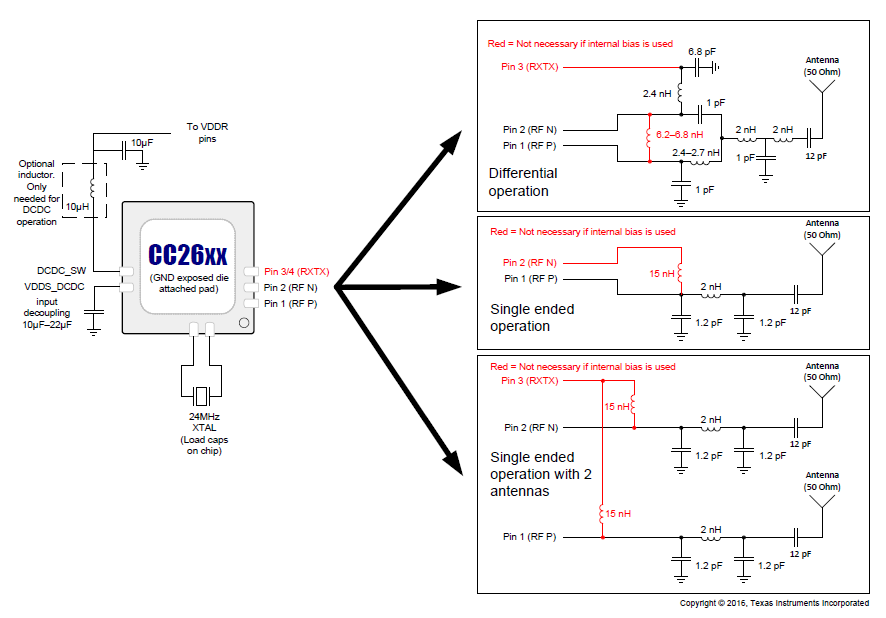Reference to the diagram below (Figure 7-1, page 41 of CC2640R2F datasheet)
1. For differential operation, external bias, it requires a 6.2 to 6.8nH inductor (in red). Can you describe the function of this inductor, and how it works, and why it is necessary during external bias mode?
2. For single end operation, external bias, it requires a 15nH inductor (in red). Can you describe the function of this inductor, and how it works, and why it is necessary during external bias mode?
3. For differential operation, based on recommended circuit below (for both internal & external bias), what is the estimated insertion loss?



